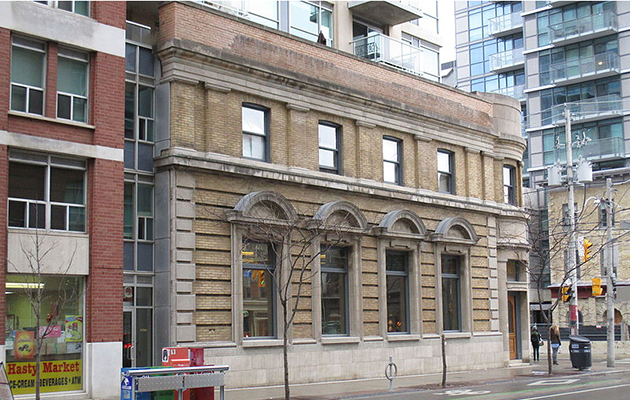
These futile exercises in preserving the past are just fig leaves to cover contemporary architecture’s shame, writes Joe Lloyd
Where to start with facadism, the act of retaining a historical facade while replacing the structure that supported it? Facadist buildings have not exactly cultivated many admirers. They’re like an oversized bandage that still doesn’t manage to cover a gaping wound. Or an acquaintance whose honey-sweet demeanour barely masks a callous core. Britain is now laden with these aberrations: strange progeny of old and new, the ornamental and the pragmatic, which rarely gratify admirers of either. Indeed, at their worst, they can appear comically grotesque. Many have suffered critical pillorying, as borne out by the Carbuncle Cup bestowed on University College London’s New Hall accommodation block in 2013.
And yet facadism has spread across Britain like an epidemic. Despite acquiring a moniker that suggests some sort of ideological charge, it is often the result of a compromise between conservation and development. It satisfies both restrictions on the demolition of listed buildings and developers’ desire to commission the maximum possible units. It also gives marketing departments fodder for their spin: move into this newly created glass-and-concrete office and you’ll be able to wistfully imbibe something of the site’s past, perhaps as its now-freestanding heavy stone facade blocks the view from your Smurf-scale window.
Facadism is not necessarily terrible in principle. The transmutation and adaptation of buildings over time is a fundamental part of architectural history. Many of Europe’s great monuments, palaces, bridges, and cathedrals are the subjects of repeated accretion and refashioning. And conserving characterful structures from the past, which in Britain at least command far more popularity than most of those erected since the mid-20th century, is an aim that only the most hard-hearted Corbusiesque would begrudge. There are numerous examples – witness Santiago Calatrava’s uncharacteristically tasteful law library at the University of Zurich — where the insertion of a new structure into an older shell has enhanced the original.
The problem with Britain’s present rash of facadism is that the results are so often lazy and cheap, patchwork solutions rather than visionary repurposing. They give architectural firms a free hand to produce their most mediocre; it should be no surprise that the sort of practices that spawn these buildings are seldom what might be called banner names. They exhibit a perennial disdain for rational scaling. Much of what made the UCL housing so egregious was that its Victorian facade sat, flimsy as the leaf on the postlapsarian crotch, before a hulking mass of grey cladding unfit to clothe a service station Travelodge. Worst of all, though, beneath the polished brick facades of these abominable chimeras hides an alarming implication: that much contemporary architecture is so banal and soulless that the veneer of the past needs to be plastered on top.
















